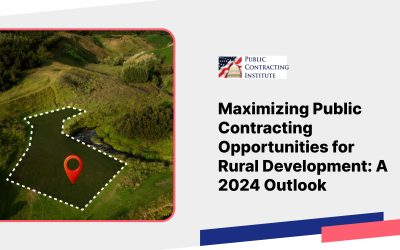By Richard D. Lieberman, Consultant
The Federal Acquisition Regulation (“FAR”) warns agencies to examine closely bids and offers that may be unbalanced—that is, despite an acceptable total evaluated price, the price of one or more contract line items is significantly overstated or understated. The primary risk to the government is that which is posed by overstatement of pricing, particularly in the first year of a potential multiple year contract. When considering a protest of unbalanced pricing, the Government Accountability Office (“GAO”) examines the reasonableness of an agency’s determination that prices are unbalanced, and the agency’s determination of whether the unbalanced prices pose an unacceptable risk. Doore Tour Co., Ltd, B-420326, Feb. 1, 2022 is an example of how the GAO reviews unbalanced pricing. Before considering that case, however, we review the key FAR sections and clause that pertain to unbalanced bids.
FAR 14.408-2 Responsible bidder-reasonableness of price.
(a) The contracting officer shall determine that a prospective contractor is responsible (see subpart 9.1) and that the prices offered are reasonable before awarding the contract . []
(b) The price analysis shall consider whether bids are materially unbalanced (see 15.404-1(g)).
FAR 15.404-1 (g) Unbalanced pricing .
(1) Unbalanced pricing may increase performance risk and could result in payment of unreasonably high prices. Unbalanced pricing exists when, despite an acceptable total evaluated price , the price of one or more line items is significantly over or understated as indicated by the application of cost or price analysis techniques. The greatest risks associated with unbalanced pricing occur when-
(i) Startup work, mobilization, first articles, or first article testing are separate line items;
(ii) Base quantities and option quantities are separate line items; or
(iii) The evaluated price is the aggregate of estimated quantities to be ordered under separate line items of an indefinite-delivery contract .
(2) All offers with separately priced line items or subline items shall be analyzed to determine if the prices are unbalanced. If cost or price analysis techniques indicate that an offer is unbalanced, the contracting officer shall –
(i) Consider the risks to the Government associated with the unbalanced pricing in determining the competitive range and in making the source selection decision; and
(ii) Consider whether award of the contract will result in paying unreasonably high prices for contract performance.
(3) An offer may be rejected if the contracting officer determines that the lack of balance poses an unacceptable risk to the Government.
FAR 52.214-10 Contract Award-Sealed Bidding
[] (e). The Government may reject a bid as nonresponsive if the prices bid are materially unbalanced between line items or subline items. A bid is materially unbalanced when it is based on prices significantly less than cost for some work and prices which are significantly overstated in relation to cost for other work, and if there is a reasonable doubt that the bid will result in the lowest overall cost to the Government even though it may be the low evaluated bid, or if it is so unbalanced as to be tantamount to allowing an advance payment.
In Doore Tour, the procurement concerned a solicitation for shuttle bus services in Korea. The solicitation was for a base period of nine months and four 1-year options. While Doore’s total price (including options) was lower than the awardee, the Army rejected Doore’s proposal because of unbalanced pricing.
Doore protested, asserting that its prices were not “unbalanced” and that it had fully explained the reasons for its pricing. The Army’s analysis showed that Doore proposed an escalation rate of +102 per cent from the base period (9 months) to the first option year. (Basically doubling its price in the first option). However, there were no assumptions or other information provided in Doore’s proposal to explain this large increase. Furthermore, in discussions, Doore provided no explanation, despite the agency’s request for it . The Government’s estimate showed escalation at 2%, with other acceptable offerors escalating a rate of 1.5% on average.
Takeaway. Companies must explain significant variations in year to year pricing, or run the risk of having their prices rejected as “unbalanced.” It should be noted that this case is unusual in that the base period price appears to have been significantly understated (compared to the later options). More frequently, unbalanced pricing occurs when an offeror “front-end loads” its pricing, charging significantly more in the first year, and then dropping significantly in subsequent years. The offeror may be betting that the agency will not exercise all options, thus increasing its profits if none or only a few options are exercised. Such a strategy will not work if the agency carefully evaluates the pricing for unbalanced pricing.

